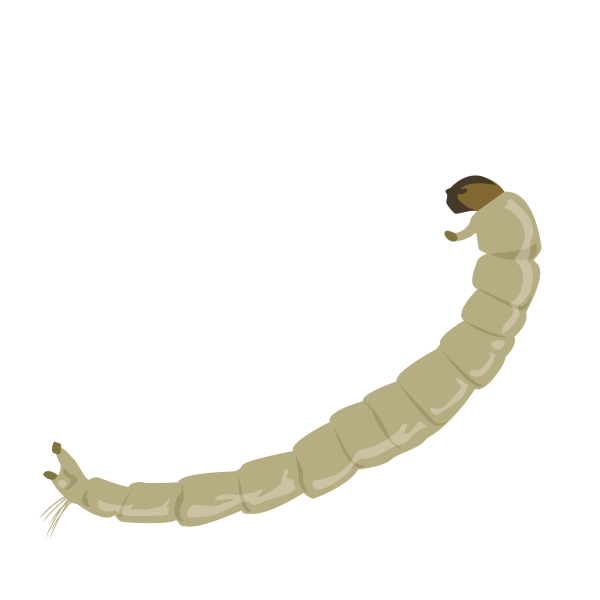Benthic invertebrates (Freshwater)
- Ecosystem: Freshwater
- Habitat: Benthos Lakes Rivers
- Species group: Invertebrates
- Publications: Arctic Freshwater Biodiversity Monitoring Plan

Jose A. Sencianes
Benthic macroinvertebrates are a diverse group of animals including insect larvae, crustaceans, worms, molluscs, and mites that are generally visible to the naked eye, and that are typically collected using nets with a mesh size of 0.25- 0.5 mm. They live on or close to the bottom substrates of rivers and lakes, i.e., in sediments, on stony substrates and/ or rocky shores. Benthic macroinvertebrates feed on water plants, algae, detritus, and other macroinvertebrates, and form the trophic link between the base of the food web (i.e., the primary producers) and predators higher up in the food chain suchas invertebrate predators, fish and waterfowl. Many benthic macroinvertebrate taxa have a wide distribution and well defined ecological niches, which make them good indicators of ecological condition.
Benthic macroinvertebrate monitoring in lakes is generally either of the littoral species that inhabit the shallow waters along the shoreline or the profundal species that live in the soft sediments of the deep, dark parts of lakes. Macroinvertebrates in rivers are commonly collected in stony riffle habitats or in the sandy/clay sediments of pool habitats as well as in association with water plants (Lento et al 2019).
Benthic macroinvertebrate sampling in Arctic rivers should follow these guidelines:
- Sampling equipment should use a standard mesh size of 500 μm for the collection of macroinvertebrates as this is commonly used in established monitoring programs.
- Sampling frequency should be once during the ice free period, ideally late in this season. This timing of sampling will avoid spring floods and will increase the chances of collecting insects at later instars, at least in the high Arctic. In addition, it is recommended that sampling is completed earlier in the season in the low- and the sub-Arctic to record early emerging taxa of insects.
Benthic macroinvertebrate sampling in Arctic lakes should follow these guidelines:
- Sampling of benthic communities should occur annually. Benthic invertebrate community surveys should be completed during the most ecologically relevant season, generally when biological diversity is highest. For many Arctic lakes this means August/September or one month before ice cover, when the majority of taxa will be present and the biomass is highest. To reduce costs and increase “data value”, sampling should be linked with other programs (zooplankton, water chemistry etc.). The use of a common field protocol describing sampling depths, bottom substrata, etc. is recommended.
- Field sieving of invertebrates should be done wherever possible, immediately after sample retrieval and before preservation, as many organisms become fragile and brittle after preservation. The general recommendation for nets and sieves for the collection of macroinvertebrates is a mesh size of 500 μm. Although smaller mesh sizes can be used (e.g., 250 μm) to increase sampling of smaller invertebrates, many monitoring programs opt for 500 μm mesh to reduce the costs associated with laboratory processing (i.e., sorting and identification time) (Culp et al 2012).
| FECs Group | Parameter | Attributes | Priority | Extreme Events | Scale | Complexity | Recurrance | Method | Notes |
|---|---|---|---|---|---|---|---|---|---|
| Benthic invertebrates (Freshwater) | Abundance and density of assemblage and of individual taxa Diversity (alpha, beta, gamma) Biomass and numbers of keystone taxa Tolerance indices and ecological traits Numbers of red-listed (threatened) and rare taxa Distribution and range (e.g., latitudinal and altitudinal) | ||||||||
| Benthic invertebrates (Freshwater) | Size structure of entire assemblage or of keystone taxon | ||||||||
| Benthic invertebrates (Freshwater) | Life cycle/instar stage at length | ||||||||
| Benthic invertebrates (Freshwater) | Emergence timing | ||||||||
| Benthic invertebrates (Freshwater) | Concentrations of contaminants in invertebrate tissues above environmental thresholds for sub-lethal or lethal effects | ||||||||
| Benthic invertebrates (Freshwater) | D50 or percent composition of substrate size classes (Wolman scale) |
 Arctic Council Working Group
Arctic Council Working Group